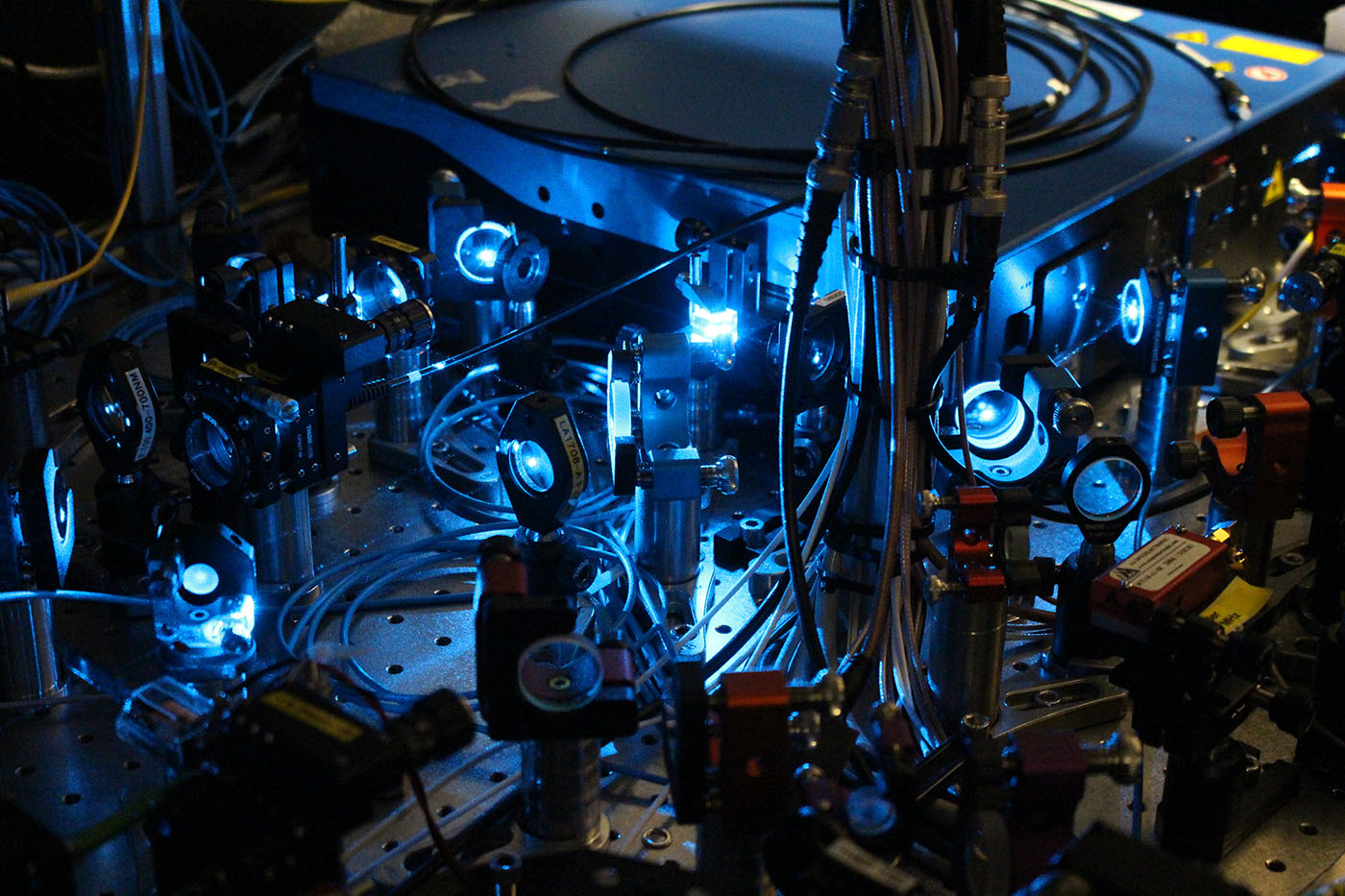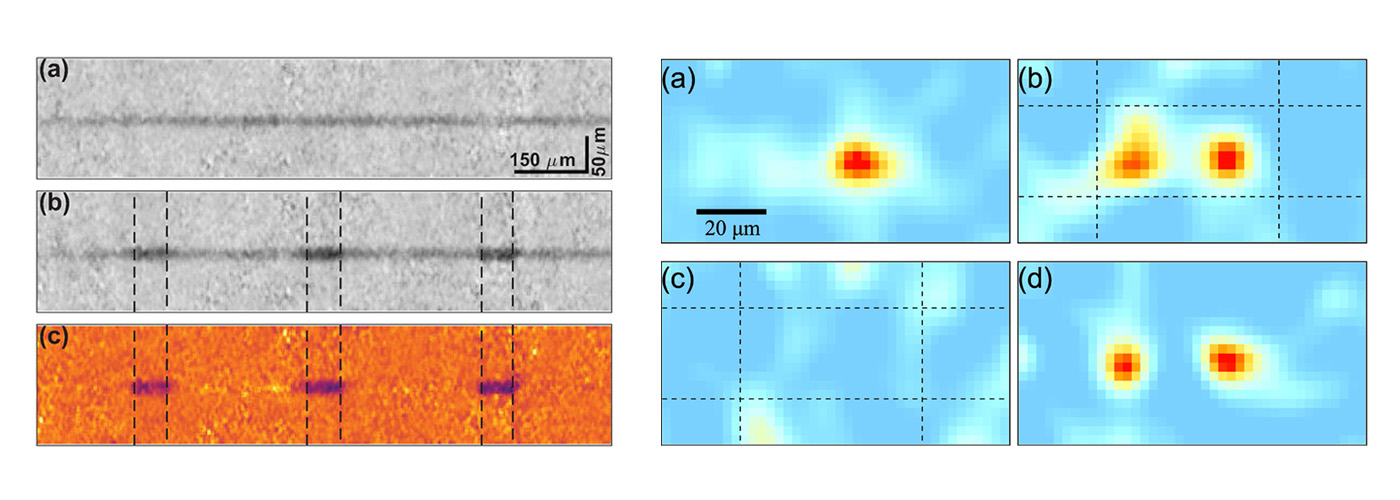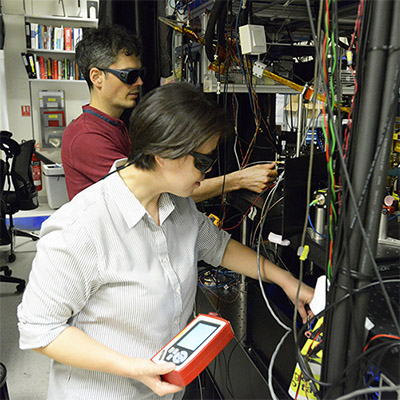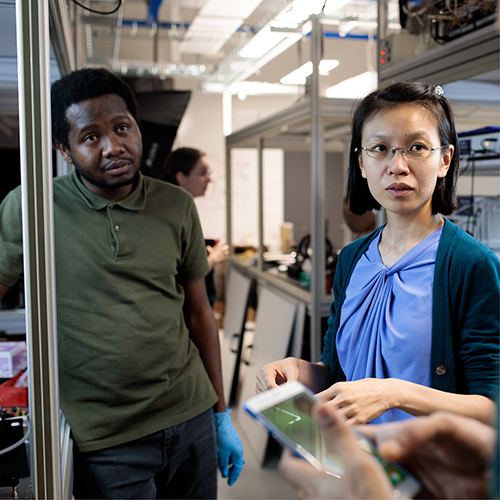Highlights
Single ions stand out from the cloud with improved imaging technique
 Atoms can be coupled with laser light to Rydberg states to realise an effect called ‘electromagnetically induced transparency’. This is one of the main ingredients of a new technique by CQT researchers to image individual ions in an atomic cloud.
Atoms can be coupled with laser light to Rydberg states to realise an effect called ‘electromagnetically induced transparency’. This is one of the main ingredients of a new technique by CQT researchers to image individual ions in an atomic cloud.
Researchers at CQT have made a breakthrough in imaging individual ions in an atomic cloud. The group of Principal Investigator Wenhui Li has developed a novel technique that can image individual ions immersed in a background gas in a single shot of one microsecond. It’s the first time such sensitivity has been achieved.
This capability could help investigate the dynamics of cold hybrid ion-atom systems and other strongly correlated systems, such as Rydberg ‘superatom’ excitations. It might also turn ions into probes for measurements in quantum gases.
The result is reported in their paper published in Physical Review Letters on 6 April 2023. Wenhui’s co-authors are CQT Research Fellow Du Jinjin and former Senior Research Fellow Thibault Vogt.
The work advances the team’s first attempts at imaging single ions, described in Physical Review Letters in 2020.
From shadows to single ions
The technique utilises the coupling of atoms to the Rydberg states with laser light to realise an effect called ‘electromagnetically induced transparency’ (EIT). This allows a probe light to pass right through the cloud of atoms.
When an ion is present in the cloud, the ion’s interaction with the atoms shifts the Rydberg energy level, which breaks the EIT condition. In the vicinity of the ion, the probe light is no longer transparent, but is absorbed by the atoms instead. This is a manifestation of the effect known as Rydberg blockade. The ion’s position shows up as a shadow in a camera image.
The first work demonstrated this imaging scheme but did not reach the sensitivity of single-shot detection. The team had to take over 200 images to average out noise in the measurements.
 Different sensitivities in ion detection achieved by the group in two demonstrations. The three panels on the left show the imaging of ion clouds that the group achieved in their first demonstration. On the right in their latest work, they achieve the capability to image the individual ions which show up as red. Credit: Physical Review Letters 124 053401 (2020), Physical Review Letters 130 143004 (2023)
Different sensitivities in ion detection achieved by the group in two demonstrations. The three panels on the left show the imaging of ion clouds that the group achieved in their first demonstration. On the right in their latest work, they achieve the capability to image the individual ions which show up as red. Credit: Physical Review Letters 124 053401 (2020), Physical Review Letters 130 143004 (2023)
Single shots
The new work solves this problem. The challenge was that the obvious solution to boosting the signal above the noise – to increase the probe power – is incompatible with maintaining EIT. Instead, the team incorporated a technique known as ‘homodyne detection’ into their scheme.
An elliptically polarised beam is passed through the atomic cloud, containing a weak s+ component as the probe light and a strong s- component as the reference light. Only the probe light interacts with the atomic cloud, while the reference light is far off-resonance and passes through the cloud as a bystander. When the weak probe light and strong reference light interfere, it increases the photon count received by the camera.
“Homodyne detection amplifies the signal such that it is not buried under noise,” says Wenhui. “Now, we can get full information out of a single shot.”
From the single-shot images, they could detect an ion with a high probability of 80% (± 5%) and expect they can improve this further by optimising their imaging system. While the researchers imaged individual ions, the technique can be readily extended to non-destructive read out of Rydberg qubits.
Learn more
Related Stories
 | Highly excited atoms show promise for quantum networks April 25 2018 |
 | CQT researchers land on a magic wavelength for scaling atomic arrays November 01 2021 |






